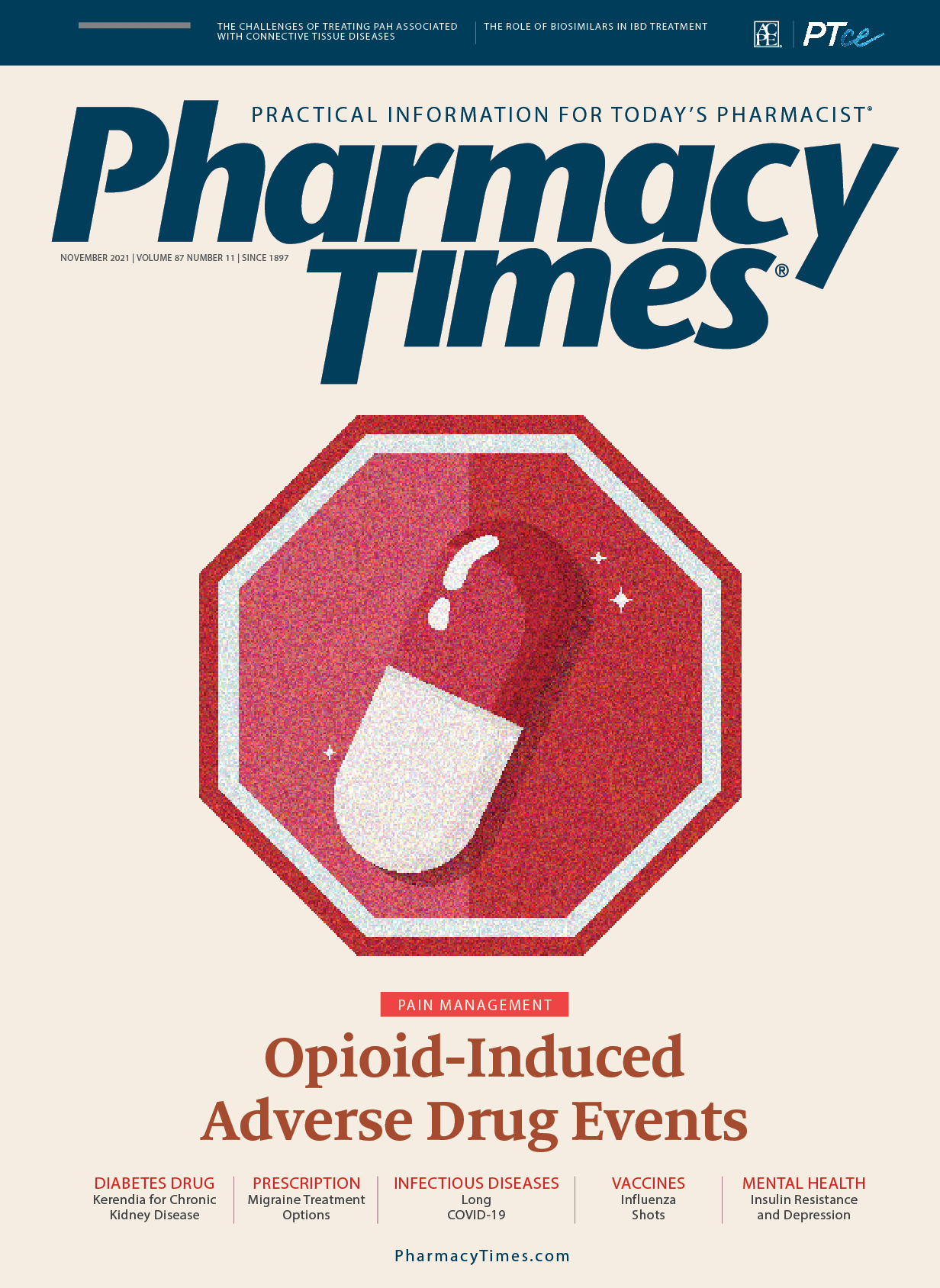Publication
Article
Pharmacy Times
Clinical Pharmacology Update: Kerendia From Bayer
Author(s):
The FDA has approved Kerendia (finerenone, Bayer) for reducing the risk of cardiovascular death, end-stage kidney disease, hospitalization for heart failure, nonfatal myocardial infarction, and sustained estimated glomerular filtration rate (eGFR) decline in adults with chronic kidney disease (CKD) associated with type 2 diabetes (T2D).1
T2D is the leading cause of end- stage kidney disease, with approximately 40% of patients with T2D developing CKD. Kerendia is the only nonsteroidal mineralocorticoid receptor antagonist to receive approval for this indication.2
Pharmacology and Pharmacokinetics
Kerendia is a nonsteroidal, selective antagonist of the mineralocorticoid receptor. Mineralocorticoid receptor overactivation is thought to contribute to fibrosis and inflammation, which can lead to permanent structural damage of the kidney.1,2
Maximum plasma concentration is observed 0.5 to 1.25 hours after oral administration. Steady state plasma concentration is achieved after 2 days of treatment. The terminal half-life of Kerendia is approximately 2 to 3 hours. It is metabolized to inactive metabolites primarily by CYP3A4 and to a lesser extent by CYP2C8.1
Dosage and Administration
Serum potassium and eGFR should be obtained before initiating treatment with Kerendia. Patients with a serum potassium concentration of greater than 5.0 mEq/L should not begin treatment with the medication. The recommended starting dose for patients with an eGFR greater than or equal to 60 mL/min/1.73m2 is 20 mg orally once daily. Patients with an eGFR of less than 60 mL/min/1.73m2 but greater than or equal to 25 mL/min/1.73m2 should begin treatment with 10 mg orally once daily. Kerendia should not be initiated in patients with an eGFR of less than 25 mL/min/1.73m2. The dosage may be increased to the target daily dose of 20 mg daily after 4 weeks of treatment and an assessment of eGFR and serum potassium levels. Kerendia may be taken with or without food.1
Clinical Trials
Kerendia was evaluated in a double-blind, multicenter, placebo-controlled, randomized study (NCT2540993) in adults with CKD associated with T2D. Patients who received a clinical diagnosis of chronic heart failure with reduced ejection fraction and persistent symptoms (New York Heart Association class II to IV) or who had significant nondiabetic kidney disease were excluded from the study. Participants were randomized to receive either Kerendia or a placebo and were followed for a median of 2.6 years. The study found that Kerendia reduced the incidence of the primary composite end point of a sustained decline in eGFR of greater than or equal to 40%, kidney failure, or renal death. Kerendia also reduced the incidence of the composite end point of cardiovascular death, hospitalization for heart failure, nonfatal myocardial infarction, and nonfatal stroke.1,2
Contradictions, Warnings, and Precautions
Treatment with Kerendia is contraindicated in patients with adrenal insufficiency or who are concomitantly using moderate or strong CYP3A4 inhibitors.
Kerendia may cause hyperkalemia. Patients with decreased kidney function and higher baseline serum potassium levels are at a greater risk for developing hyperkalemia. More frequent serum potassium monitoring may be required for higher-risk patients, including those using medications that impair potassium excretion or increase serum potassium levels. Serum potassium levels should be monitored periodically during treatment with Kerendia, and the dosage should be adjusted when appropriate.
Patients using Kerendia should avoid consuming grapefruit and grapefruit juice. Because concomitant use with moderate or weak CYP3A4 inhibitors may increase the risk of adverse effects (AEs), serum potassium levels should be monitored during adjustment or initiation of either Kerendia or the moderate or weak CYP3A4 inhibitor, and the dose of Kerendia should be adjusted as needed. Kerendia should not be used concomitantly with moderate or strong CYP3A4 inducers.
Patients should not breastfeed while using Kerendia and for 1 day after stopping treatment. Patients with severe hepatic impairment should not take Kerendia. Patients with moderate hepatic impairment may require additional serum potassium monitoring.
The most common AEs are hyperkalemia, hyponatremia, and hypotension.1
Monica Holmberg, PharmD, BCPS, is a pharmacist and Pharmacy Times® contributor.
References
1. Kerendia. Prescribing information. Bayer HealthCare Pharmaceuticals; 2021. Accessed September 3, 2021. https://labeling.bayerhealth-care.com/html/products/pi/Kerendia_PI.pdf
2. Bayer’s Kerendia (finerenone) receives U.S. FDA approval for treatment of patients with chronic kidney disease associated with type 2 diabetes. News release. Bayer HealthCare Pharmaceuticals; July 9, 2021. Accessed September 3, 2021. https://bayer2019tf.q4web.com/news/ news-details/2021/Bayers-KERENDIA-finere- none-Receives-U.S.-FDA-Approval-for-Treat-ment-of-Patients-with-Chronic-Kidney-Disease-Associated-with-Type-2-Diabetes/ default.aspx

Newsletter
Stay informed on drug updates, treatment guidelines, and pharmacy practice trends—subscribe to Pharmacy Times for weekly clinical insights.





